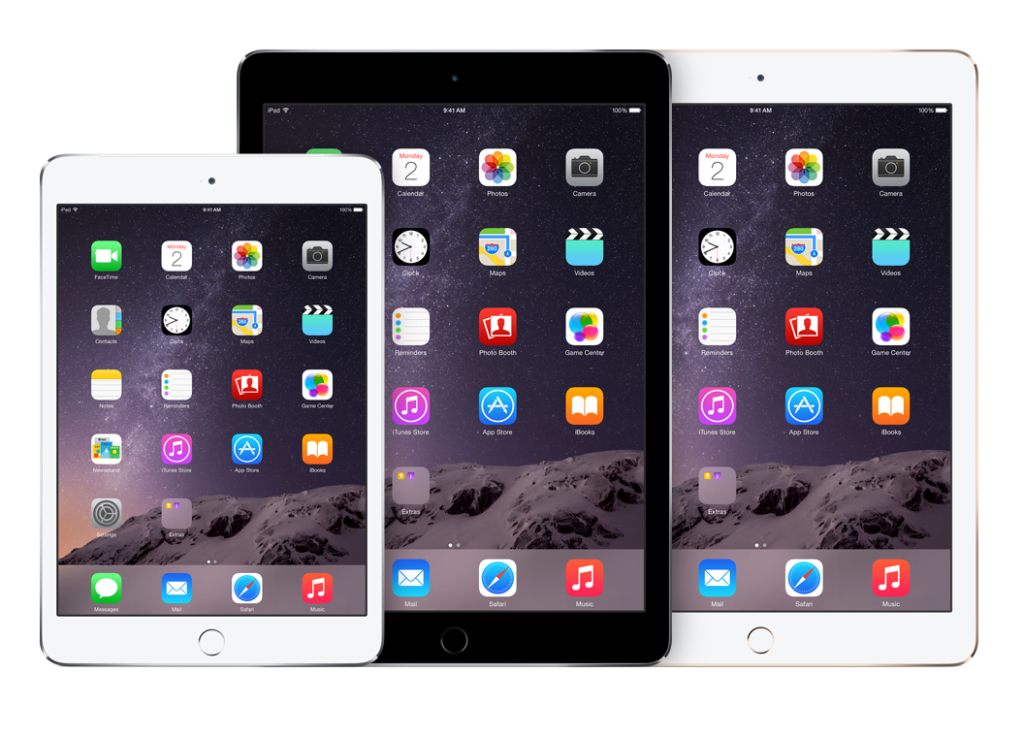
The following article was originally the content of the iPad Product Line page, specifically an update written on 30 May, 2015. In refreshing the content now (April 2016), this post becomes a form of version history for the now superseded content.
With four variants available, my personal experience within the iPad product line has followed the iPad Air branch. I believe it is the “cream of the crop” in terms of offering the best Apple technical specifications of all available models. The Compare iPad models page definitely seems to indicate this.
The journey through models saw the 1st Gen (launched April 2010) create a break-out sensation globally. I got my hands on a WiFi+3G unit as part of launch day and instantly benefitted from the crossover of iPhone apps.
The 2nd Generation model was launched approximately a year later (unveiled March 2011) and its technical improvements represented a significant jump across performance, finish and functionality. I followed through with the same launch day purchase (online) and was able to recover a respectable resale amount for the original model.
In March 2012, the 3rd Generation model created some marketing controversy in the rebooted name “the New iPad”, causing some to question the value proposition being pushed by the Apple marketing juggernaut. This model was short lived given the arrival of the 4th generation model in October of the same year. My experience with the 3rd Generation is remembered most for the changes in SIM card form-factor. It was during 2012 that Apple migrated from the nano SIM to the micro SIM. The 3rd Generation model was also notorious for its 4G claims given that 4G compatibility was restricted to the US in terms of spectrum licensing. 4G is a broad term and when you dig deeper, particularly having exposure to the technology in my day-to-day work, you appreciate the finder details. The deployment of the 4G mobile service/network relies on use of the radio frequency spectrum, which is regulated in terms of use by national governments. Unfortunately, the roll-out and deployment of 4G/LTE has not been uniform and thus, in these early days of the 4G launch, compatibility was a higher concern.
The 4th generation iPad hardware introduced retina display capabilities (it was marketed after all as “the iPad with Retina Display”). Apple’s innovation grated this time with the market over the introduction of the new Lightning connector which replaced the previous 30-pin dock connector. Introduced less than a year (October 2012) after its immediate predecessor, Apple also had to combat the negative press with return/replacement programs for customers who had bought the defunct 3rd generation model in the prior fortnight leading up to the product launch. It was during this same market launch that the iPad Mini was first introduced, creating a second market segment for Apple to expand its dominance in.
The iPad Air arrived in October 2013, marking the next significant innovation and change to the overall form factor of the iPad. Along with this “normal sized” unit, the 2nd generation of iPad Minis were announced with general market release of the newest products falling a month later (November). This latest product update saw Apple extend the retina display resolution to both iPad models. Not only did this model see a significant change/evolution to the hardware, but it also pioneered the latest iOS7 software shift away from historical skeuomorphic design.
Not only has Apple continually pushed the hardware innovation bar higher over the 3-4 years that represent the iPad lifetime, but we are now starting to see greater application of the devices in terms of App development and software innovation by third party developers. It is this iOS beach head that will ensure Apple remains at the forefront of innovation for the immediate future. Whilst the consumer market approaches maturity, enormous potential lies in the business/corporate market, where the iPad Mini offers new environments where it can be integrated into. Apple’s collaboration with key industries such as health and car manufacturing demonstrate where the rich value-add will drive growth.
As of early 2015, both my Dad and I now utilise the current generation iPad Air 2, which has limited feature enhancements on its predecessor iPad Air, but standardises Apple’s current product range with both iPhones and iPads sharing the same fingerprint sensor home button. both iPad and iPhone incorporate NFC to enable Apple Pay.
Once Apple final achieves convergence between iOS and OSX, particularly in tandem with the next generation Apple TVs, the next wave of third party software development will help to ensure Apple continues to grow its presence across the consumer electronics industry. Extending its range of iOS devices makes perfect sense given the powerhouse of apps that are housed within; ready for adaptation to content-hungry consumers and businesses.

You must be logged in to post a comment.